By Robert Bruce
(Editor’s Note: SAR Military Affairs Editor Robert Bruce was cleared to visit Fort Bragg, North Carolina, home of the US Army John F. Kennedy Special Warfare Center and School, to do a feature story on the tough and challenging training for Military Occupational Specialty 18 Bravo – the Special Forces Weapons Sergeant. His report is built around two days on the range during foreign and crew-served weapons live fire and an in-depth interview with a man directly responsible for updating the course’s program of instruction and carrying it out on a daily basis. – Robert G. Segel)
“18 Bravos are the Team Sergeant’s right hand man. 18 Bravos and Charlies (Engineers)…are the meat eaters.” Master Sergeant Robert Baugher, 18 Bravo Course Chief Instructor and NCOIC of the 4th Battalion’s Weapons Training Detachment.
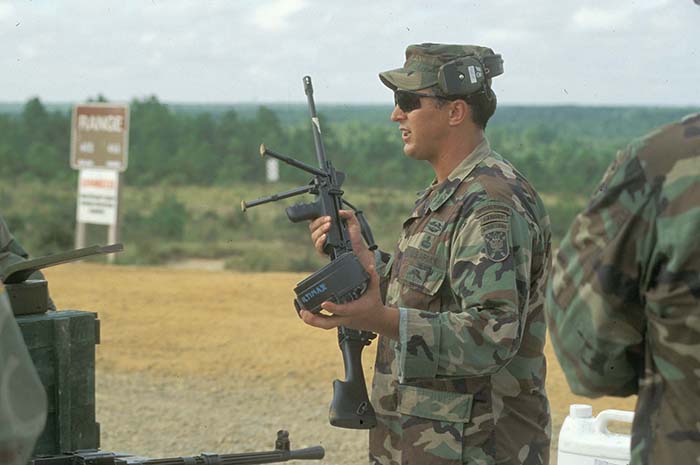
The Army Special Forces Operational Detachment Alpha – the “A Team” – consists of two officers and ten NCOs. Two of each of these sergeants are trained in one of five functional areas including Weapons, Engineer, Medical, Communications, and Operations and Intelligence. While strong arguments can be made for the relative importance of each of these, most readers of Small Arms Review are probably naturally inclined to agree with MSG Baugher.
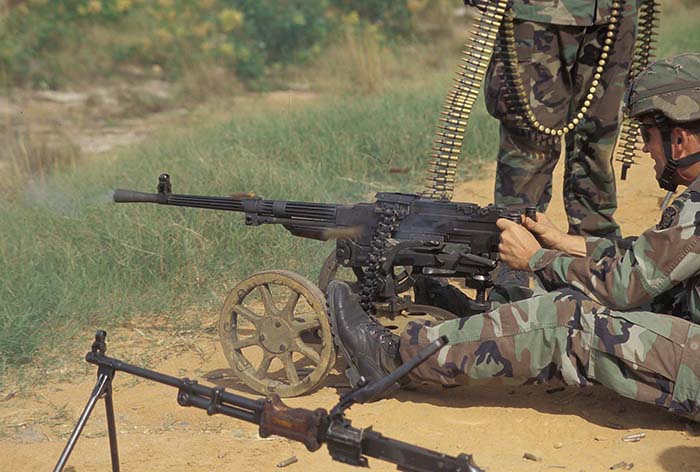
Baugher has been the Chief Instructor for the 18 Bravo course for a little more than a year, coming from 2nd Battalion, 3rd Special Forces Group, directly engaged in the Global War on Terror (GWOT). His extensive combat experience has strongly influenced an insistence on dramatic changes to the course that reflect harsh and constantly evolving realities of unconventional warfare.
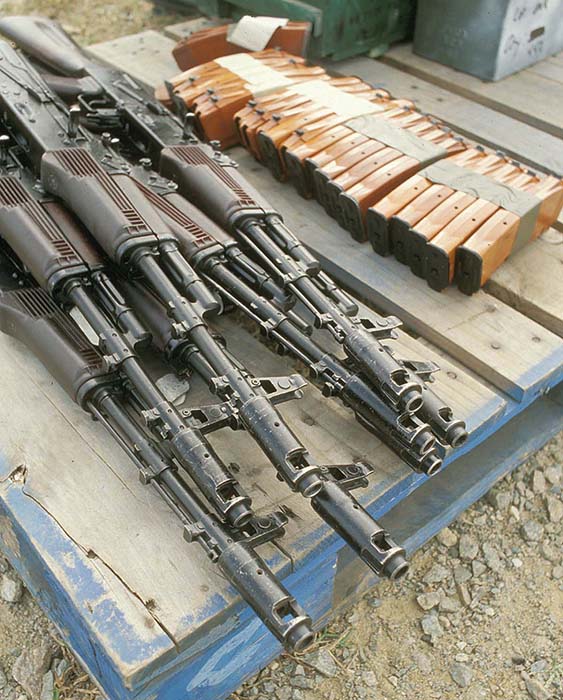
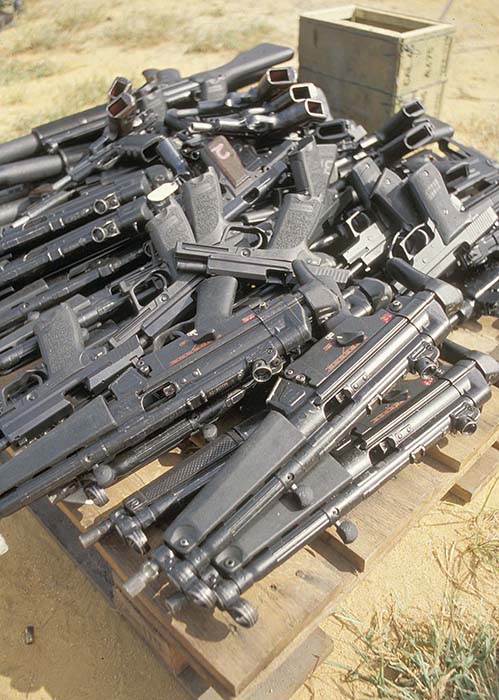
Informal conversations with his battalion commander and command sergeant major show enthusiastic support for Baugher’s ideas and how they fit into the big picture of ongoing transformation throughout Army Special Forces. Among several of these are increased emphasis on advanced combat marksmanship with individual weapons and effective employment of Ground Mobility Vehicles with the heavy firepower of their crew served weapons.
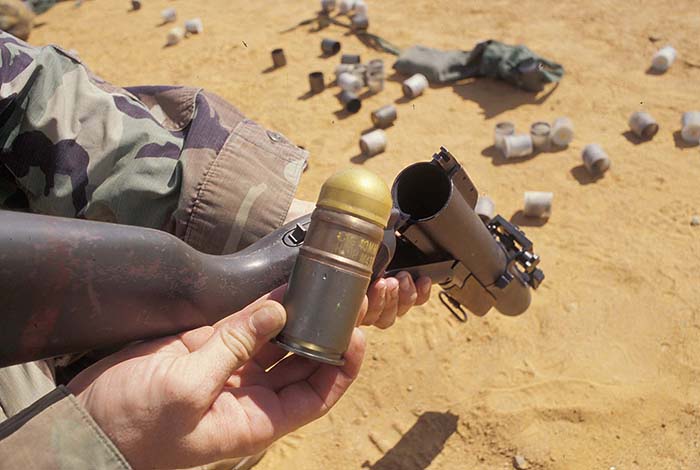
SAR’s long talk with Baugher took place on Fort Bragg’s Range 44 while more than sixty members of the current 18 Bravo class got a chance to live fire many of the enemy, allied and US individual and crew-served weapons they had been intensively studying for several weeks.
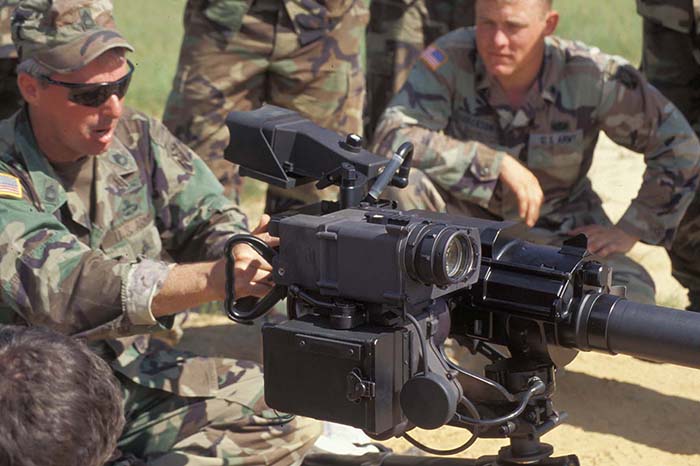
As these exotic tools of war were put into action the nearly constant rattle of small arms fire was repeatedly overwhelmed by deafening explosions from heavy weapons like the incomparable 106mm recoilless rifle. Thick clouds of fine reddish dust, kicked up by powerful backblast, drifted over the range carrying the strong and familiar scent of burnt gunpowder.
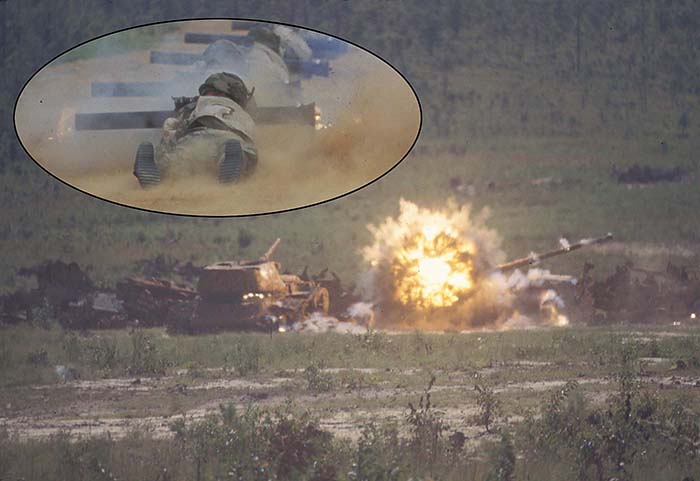
It is to be expected from a warrior with more than a dozen years in Army Special Forces and a lot of recent and intense combat experience, that Baugher is not shy about expressing his strong opinions and observations. He pulled no punches in candidly answering our many specific questions, trusting that we would report the answers accurately and in the context of official information provided by JFK Special Warfare Center and School.
Advice for Students
Baugher and his combat-seasoned instructor staff have some sobering words for their new students about the realities of what they are being trained for.
“You’re gonna get shot at! You know what, you don’t get scared when you’re shot at, you get ….(really, really mad)! This requires controlled aggression, another thing we will teach you in CMMS (Combat Marksmanship). You need to be able to channel all that and put it here (makes handgun gesture). And then switch it off. And when the light comes back on switch it back on.”
The course is dangerous work, reflecting the reality of real world operations. It was emphasized that students need to overcome fear of the guns. This is a big part of the CMMS range with shooting and moving – two guys shooting while moving – and getting what Baugher calls “that frying pan hitting them in the nose” (close muzzle blast from the weapon right beside them), described as a feeling and taste like getting punched in the face.
Changes Driven by GWOT
Lieutenant Colonel Mark Schwartz, 4th Battalion commander, spoke positively of the “institutional agility” shown by the command structure in quickly reviewing and approving changes in response to challenges in the Global War on Terror. Some of these in the 18 Bravo course, he said, are integration of close air support, .50 caliber sniping, close quarters battle, and employment of crew served weapons from ground mobility platforms.
“Gun Trucks,” modified Hummvees officially called Ground Mobility Vehicles (GMV), are now a key element of the Bravo course. There is a full day of GMV crew drills with the Mark 19 (40mm grenade machine gun) and .50 cal. M2HB including stationary and moving marksmanship, misfire procedures and related skills. Also load plans, how to configure it, how to set it up with all necessary fuel, food, individual gear and everything else.
Then there is intensive combat marksmanship – four days of nothing but CMMS with M9 (9mm Beretta pistol) and M4A1 (5.56mm Colt carbine). The goal is to double this training in later classes with more shooting and moving, shooting while moving, barriers, critical task evaluations, and a stress shoot at the end.
The rationale, Baugher says, is to get students out of their comfort zone, “away from getting behind a weapon on a sandbag, shaking it off and breaking a round. Move – shoot – put rounds on the target.”
Tough Choices
4th Battalion Command Sergeant Major George Bequer also emphasized recent changes in the Weapons Sergeant course.
“We’re not here to build gunsmiths,” he said while reviewing 18 Bravo range operations, “we want experts in how to employ these weapons in combat.”
With enormous numbers of weapons of all types out in the world it is a real challenge to choose which ones to include in the thirteen week course. The school solution is to pick those that best represent ones in use by US, allied and enemy forces, then specific examples among them to illustrate the different operational systems such as gas tappets, gas direct, manual pump, etc.
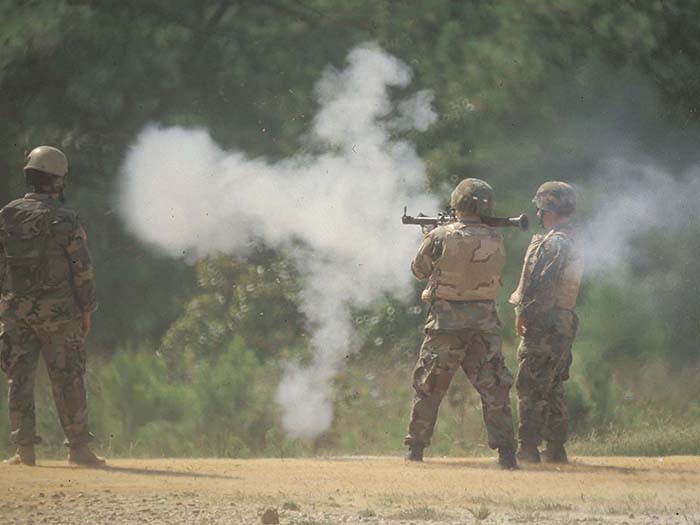
The long laundry list of small arms includes commonly encountered pistols, submachine guns, assault, battle and sniper rifles, machine guns, and grenade launchers. Representative examples are seen in the accompanying photos and readers will no doubt recognize the old GI “Forty Five” along with the new HK USP, AKs of all types, US and Communist bloc squad autos and belt feds, as well as the M79 and M203 “bloopers.”
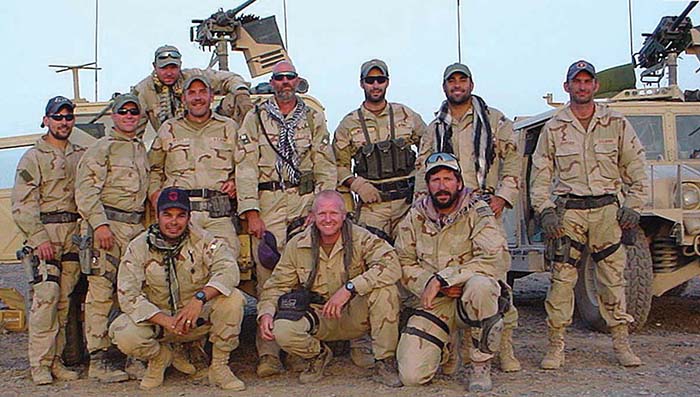
The first thing 18 Bravo students get is a class called Basic Operations, breaking down every system of operation and then going into cycles of operation – feeding, chambering, locking, cocking, firing, unlocking, extracting, and ejecting. That foundation can be applied to any different weapon system so the student can say “OK, I don’t really know much about this particular rifle or machine gun but I know it’s a gas tappet that hits the op rod.”
Thick paper manuals are on the way out as new students coming into the Q Course will be issued a notebook computer and software with references. 18 Bravos get CDs with weapon data, breakdowns, functioning, and more. They’ll also get a software package that will let them log into “ARSOF (Army Special Operations Forces) University” to access a comprehensive database with information and instruction useful to most any aspect of Army Special Operations Forces.
Weapons and Ammunition
The interesting and far-reaching question of where the foreign weapons and ammunition come from was sent by public affairs up the chain of command. SAR was told that foreign weapons procurement is based on the needs and requirements from units throughout the global theater of operations. Once a need has been identified, then an approved program of instruction is developed to support training while a request is processed through procurement channels.
Many among us have wondered about all those mountains of foreign weapons and ammunition captured in combat. Instead of torching, crushing or blowing them up, we asked if they could be brought back for training use to reduce expenses. The official answer makes sense on many levels including factoring the inherent dangers of high explosive ordnance and the devices that hurl them.
“There is a system in place but in most cases it is not cost effective to transfer weapons and ammo back to the installation Ammunition Supply Point (ASP). All ammo and weapons must go through testing and meet safety certification requirements and then be repackaged for shipping to the designated ASP. The time and cost involved usually makes it cost prohibitive.”
SAR was also assured that, despite the significant increase in class sizes and the changes in weapons being taught, the 18 Bravo course is getting enough ammo and there isn’t a problem to get more when the situation calls for it.
Performance-Oriented Training
Each block of instruction is followed by a test, often a combination of hands-on and written. For light weapons, they teach all the systems of operation and show key examples of pistols, rifles, and machine guns within each system. There is ample time for practical exercise with each before the hands-on examination including assembly and disassembly, changing barrels, crew drills, and employment.
18 Bravo instructors say the light weapons examination seems to be the hardest part for many students. This is a timed exercise involving key weapons and their disassembly, assembly, loading, (dry) firing, and other mechanical operations. They believe that self-induced stress is the biggest factor since most of the same students do fine in the practical exercises.
The characteristics part of this exam is done verbally. An instructor will hold up different guns picked at random and ask what it is, cyclic rate, system of operation, caliber and feed.
Students are also tested on their ability to successfully diagnose and correct operating deficiencies; misfiring, failure to feed, failure to extract, etc.
Instruction and practical exercises with antitank and antiaircraft systems follow a similar pattern. US and other weapons in the first category include the current AT4, Javelin, SPG-9, and Carl Gustaf, as well as two oldies but goodies; 90mm M67 and 106mm M40. Air defense weaponry includes the US Stinger and some ex-Soviet shoulder launchers starting with the SA-7.
Indirect Fire
Another area of difficulty is said to be in FDC (Fire Direction Center) teaching the employment of mortars and recently including other heavy hitters in JFE (Joint Fire Elements) with artillery and close air support. Baugher believes this is because many of the students have never had experience with the process. The instruction begins in a logical progression from drills and live fire with 60 through 120mm mortars, then adjusting fire as a Forward Observer. By the time they get to FDC they understand better why they’re doing specific tasks because they already know what’s going to happen down at the gun.
But attention to detail in all the precise math and geometry throws some off. “One little mistake,” he says, can have tragic consequences.
Measuring Success
The peacetime grace period is gone for Q Course (SF Qualification) graduates. Most will get their gear and fall in with a team that is already deployed to a war zone. 18 Bravo instructors make sure they’re switched on and ready to go.
Every man must demonstrate mastery of the mortars, antitank weapons and others organic to an ODA (Operational Detachment Alpha) – Mark 19, Fifty Cal., Mark 47 (40mm Advanced Lightweight Grenade Launcher), soon the Mark 44 Minigun.
And Baugher says, “Know the kit they carry – pistol and M4. When they know those guns in and out and know how to operate them, we feel they’re trained.”
Usually, more than nine out of ten students make it through the 18 Bravo course and many among the ones who don’t are eligible to “recycle” – to come back and pick up where they left off.
The Way Ahead
Baugher and his battle-hardened instructors would like to see additional changes to the Bravo course. Key among these are integration of high-tech simulators for appropriate weapons as well as FO and close air support training, more range time with all weapons, and more real-world type training with GMV gun trucks.
The Wall
SAR asked Baugher if there anything not officially part of the 18 Bravo course that he would encourage the students to see.
“The Wall at USASOC,” he said immediately, referring to the memorial in US Army Special Operations Command’s headquarters area. “See the name Mitch Lane and all the other men from the Regiment who gave their lives in GWOT. They need to know the hard reality of what they’re getting into.”
Are You Special Forces Material?
Background and aptitude play a big role in what MOS (Military Occupational Specialty) is assigned following Special Forces Assessment and Selection (SFAS). For Weapons Sergeants, good scores in GT (general technical component of the Armed Services Vocational Aptitude Battery testing) and CO (combat operations) are particularly important.
SFAS evaluators will be looking closely for six “core attributes” in individuals who best fit the SF mold – intelligence, trainability, judgment, influence, physical fitness, and motivation.
Those currently serving the US Army are the usual source of volunteers for Special Forces training. Detailed information on eligibility requirements is available at www.bragg.army.mil/specialforces.
In addition, an exciting direct enlistment program is available for qualified young men in civilian life. The 18 XRAY track guarantees new enlistees the opportunity to “try out” for Special Forces. Call your local Army recruiter or learn more online at www.goarmy.com.
Introduction to Special Forces
The Special Forces Operational Detachment Alpha, or A-Team, is the fundamental building block for all Special Forces Groups. There are six Alpha detachments in each SF company.
A captain leads the 12-man team. Second in command is a warrant officer. Two noncommissioned officers, or NCOs, trained in each of five SF functional areas: weapons, engineer, medical, communications, and operations and intelligence comprise the remainder of the team. All team members are SF qualified and cross-trained in different skills, as well as being multi-lingual.
Capabilities of the highly versatile A-Team include: plan and conduct SF operations separately or as part of a larger force; infiltrate and exfiltrate specified operational areas by air, land, or sea; conduct operations in remote areas and hostile environments for extended periods of time with a minimum of external direction and support; develop, organize, equip, train and advise or direct indigenous forces up to battalion size in special operations; train, advise and assist other US and allied forces and agencies; plan and conduct unilateral SF operations; perform other special operations as directed by higher authority.
The Special Forces Pipeline
The Special Forces Qualification Course is considered by many to be the best special operations training and education in the world. Its mission is to train and build the future operational force with SF warriors who are adaptable, agile and capable to immediately enter into combat operations as a member of a Special Forces team.
The 1st Special warfare Training Group (Airborne) at Fort Bragg, NC, is responsible for all six phases of SF training, which is referred to as the Special Forces Pipeline.
This requires a commitment of one year (two years for 18 DELTA Medical Sergeants) of intensive coursework based on the soldier’s military specialty training. A soldier is awarded the distinctive Green Beret and the Special Forces Tab at the end of all phases of training. The six phases include:
- Phase IA – Special Forces Assessment and Selection Conditioning Course
- Phase IB – Special Forces Assessment and Selection
- Special Forces Preparation Course
- Phase II – Small Unit Tactics/SERE/PG/HD
- Common Leadership Training
- Phase III – Military Occupational Specialty Specific Training
- Phase IV – Language Training
- Phase V – Unconventional Warfare Culmination Exercise (Robin Sage)
- Phase VI – Graduation
All enlisted soldiers in the 18 X program must attend the Special Forces Preparation Course and those who have not already completed the Primary Leadership Development Course must go to Common Leadership Training.
The Special Forces Weapons Sergeant, MOS 18 Bravo
Special Forces Weapons Sergeants are the weapons specialists. They’re capable of operating and maintaining a wide variety of US, allied and foreign weaponry.
Some duties of the 18 Bravo include:
- Going behind enemy lines to recruit, train and equip friendly forces for guerrilla raids.
- Clearing mine fields, both underwater and on land.
- Carrying out demolition raids against enemy targets.
- Employing warfare tactics and techniques in infantry operations.
- Conducting offensive raids or invasions of enemy territories.
- Maintaining proficiency with all foreign high-density light and heavy weapons.
- Evaluating terrain.
- Selecting weapons placement and sites.
- Assigning targets and areas of fire.
- Reading, interpreting and preparing combat orders.
General Requirements
Special Operations Forces have very demanding physical requirements. Good eyesight, night vision, and physical conditioning are required to reach mission objectives via parachute, land or water. Excellent hand-eye coordination is also required to detonate or deactivate explosives. In most instances, Special Operations Forces Team Members are required to be qualified divers, parachutists and endurance runners.
Training
Due to the wide variety of missions, Special Operations Weapons Sergeants are trained as swimmers, paratroopers and survival experts, as well as trained in many forms of combat. Total training time consists of 44 weeks of formal classroom instruction and practical exercises. Some of the skills you will learn are:
- Physical conditioning, parachuting, swimming and scuba diving.
- Using land warfare weapons and communications devices.
- Handling and using explosives.
- Bomb and mine disposal.
Helpful Skills
- Ability to work as a team member.
- Readiness to accept challenge and face danger.
- Ability to stay in top physical condition.
- Interest in weapons and artillery.
- Ability to remain calm in stressful situations.
For up to date information on specific requirements contact your local Army recruiter.
| This article first appeared in Small Arms Review V9N9 (June 2006) |











